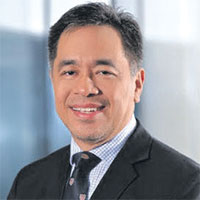May 22, 2025 l Manila Bulletin

Before the Israel-Hamas conflict broke out in 2023, this writer was blessed to join a Holy Land pilgrimage in Israel. One of the highlights of the visit was the Church of the Holy Sepulcher in Jerusalem, one of the holiest places in Christendom, believed to encompass both Golgotha, the site of Jesus Christ’s crucifixion, and the tomb from which he is said to have risen.
A personal realization of the visit was learning that the place is jointly controlled by several Christian denominations under a long-standing agreement called the Status Quo. Dating back to 1757, the agreement dictates who controls which part of the church and who can conduct services. The main denominations are the Greek Orthodox, Roman Catholic (via the Franciscan Order), and Armenian Apostolic Churches, while others like Coptic, Syriac, and Ethiopian Orthodox churches have rights to specific chapels. A Muslim family has been entrusted with the keys and the responsibility for opening and closing the church for centuries.
These communities all venerate the same Christ, yet their often-tense cooperation within the same sacred walls underscores enduring religious divisions. Understanding why such divisions persist—despite shared belief in Jesus—requires not only a theological or historical lens but also, as Paul Seabright proposes in “The Divine Economy,” an economic analysis of religion.
Seabright contends that religious institutions can be seen as platforms—entities that connect individuals in mutually beneficial relationships they might not form independently. Much like digital platforms such as Facebook, Uber, or Airbnb, religious organizations provide services (ritual, meaning, community) that individuals cannot easily access on their own. But just as these platforms compete for users, religious institutions compete for followers, resources, influence, and legitimacy. The Church of the Holy Sepulcher, then, is not only a holy space but also a site of long-standing institutional competition, where each denomination seeks to maintain its claim, visibility, and control.
Despite their shared reverence for Christ, the three communities maintain distinct liturgical calendars, theological emphases, and cultural identities. Their division of the church—mandated by the 19th-century “Status Quo” arrangement—is so rigid that even moving a ladder can spark dispute. These divisions, while seemingly petty, reflect centuries of power struggles, schisms, and imperial patronage. Seabright’s framework helps us see that religious behavior is not solely about belief but also about organizational incentives and social positioning. Religions must retain adherents, justify their authority, and demonstrate value—especially in shared religious marketplaces.
Yet Seabright also notes that religions often succeed because they offer more than doctrine. They provide community, security, moral regulation, and rites of passage—functions that can overlap and compete with those of other religious groups or even secular institutions. In this context, the Church of the Holy Sepulcher functions as a shared resource—a platform for spiritual experience—that none of the groups can afford to forfeit, even as they jostle for control. The fact that joint custodianship has persisted—albeit uneasily—demonstrates what Seabright might call a stable equilibrium: no one party can dominate without risking collective loss.
The coexistence at the Holy Sepulcher, then, is not just about theological compromise but economic necessity and institutional self-interest. Each church’s presence reinforces its legitimacy in the eyes of followers and the global Christian community. Even competition, in Seabright’s view, can promote adaptive behavior—encouraging innovation in rituals, outreach, and community engagement to retain and attract adherents.
In conclusion, the Church of the Holy Sepulcher exemplifies how religious competition can coexist with shared belief, producing both tension and cooperation. Seabright’s economic lens reveals that religious divisions often reflect deeper structural and organizational dynamics rather than just doctrinal differences. While the three communities worship the same Christ, their competition for influence and identity within this sacred space reminds us of that religion, like any human institution, is shaped by history, incentives, and the ongoing negotiation of shared resources.
I hope the reader does not view this piece as blasphemous, which the purist is sometimes wont to do. In a related article in The Economist, it was noted that “religions lend themselves to economic analysis nicely. They offer a product (such as salvation), have networks of providers (priests, imams, and so on), and benefit from good distribution networks. It is not just trade that travels on trade routes: ideas, diseases, and religions, too.”
Here’s another economic insight from The Economist: “When historians talk about the Reformation, they tend to focus on the theological dimensions. Economists would describe it as the moment when a monopoly provider (the Catholic church) was broken up, leading to an increase in consumer choice (Protestantism) and the price of services declining (indulgences were out).”
Faith remains powerful even in today’s increasingly secular world. Our beliefs, if strong enough, must not suffer simply because we use the lens of a discipline like economics to understand them. Instead, it should lead to some enlightened appreciation. Contrary to Friedrich Nietzsche, God is very much alive today.
***The views expressed herein are her own and do not necessarily reflect the opinion of her office as well as FINEX. For comments, email benel_dba@yahoo.com. Photo is from Pinterest.

